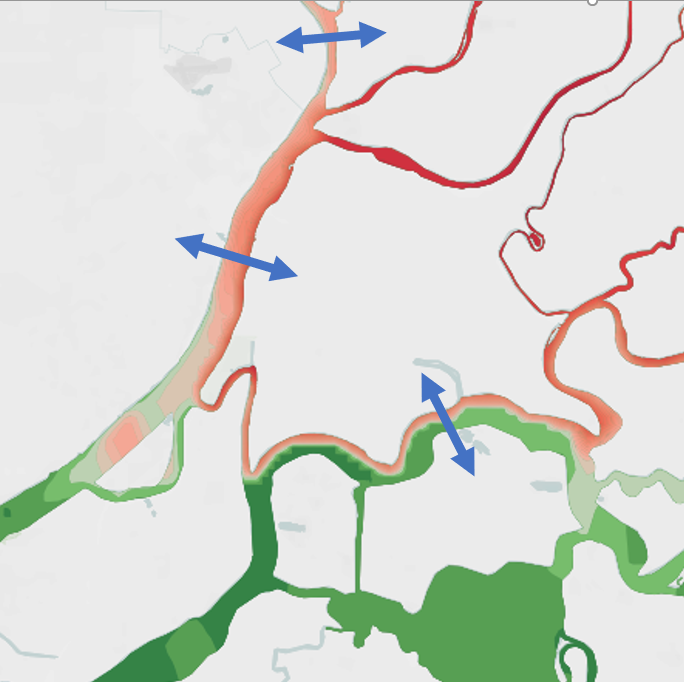- Home
- :
- All Communities
- :
- Products
- :
- Geoprocessing
- :
- Geoprocessing Questions
- :
- Kriging vs Spline with Barriers
- Subscribe to RSS Feed
- Mark Topic as New
- Mark Topic as Read
- Float this Topic for Current User
- Bookmark
- Subscribe
- Mute
- Printer Friendly Page
Kriging vs Spline with Barriers
- Mark as New
- Bookmark
- Subscribe
- Mute
- Subscribe to RSS Feed
- Permalink
- Mark as New
- Bookmark
- Subscribe
- Mute
- Subscribe to RSS Feed
- Permalink
Kernel Interpolation with Barriers is also an interpolation tool that allows you to specify the output as a GA layer, a feature class or raster. Like kriging it also allows you to do cross validation to decide which interpolator and parameters to pick.
- Mark as New
- Bookmark
- Subscribe
- Mute
- Subscribe to RSS Feed
- Permalink
Hi Steve,
I apologize for the late response. Thanks for the reminding me about Kernel with barriers, I have also tried Diffusion with barriers. The problem with these methods is the processing time. When the default properties are left unchanged, the surface does not cover the entire area (image attached). To fix this, I increase the bandwidth but then the wizard takes over 20 minutes to finish, most times even more.
- Mark as New
- Bookmark
- Subscribe
- Mute
- Subscribe to RSS Feed
- Permalink
You can often improve performance when using barriers if you simplify the geometries as much as possible. For a first pass I'd try the SimplifyPolygon / SimplifyLine tool with POINT_REMOVE option and a tolerance of 1 ft. See if these features still look good enough for you and haven't changed the input points used in a way you don't like (use the largest value you are comfortable with), then test to see how the performance improves.
- Mark as New
- Bookmark
- Subscribe
- Mute
- Subscribe to RSS Feed
- Permalink
Hi Steve,
I actually tried the simplify tool with your settings, but the processing time is still pretty slow (~10 - 20 minutes). The polygon I'm using has very complicated geometry and I don't think I could get it fast enough for it to be efficient in my workflow. I have decided to stay with Spline with Barriers and using Focal Statistics along with the Contour tool to produce a smooth vector file. The problem I'm encountering now is a weird "halo" effect along the edge of the polygon, like a gradient in some cases. I wonder if is an artifact of Spline with Barriers.

- Mark as New
- Bookmark
- Subscribe
- Mute
- Subscribe to RSS Feed
- Permalink
Jennifer
Could you please post an image including;
- the points and labels showing their values
- legend for the raster
- also show the barriers
and have you applied a mask?
Thanks
Steve Lynch
- Mark as New
- Bookmark
- Subscribe
- Mute
- Subscribe to RSS Feed
- Permalink
Here are the images requested:
I have not applied a mask.